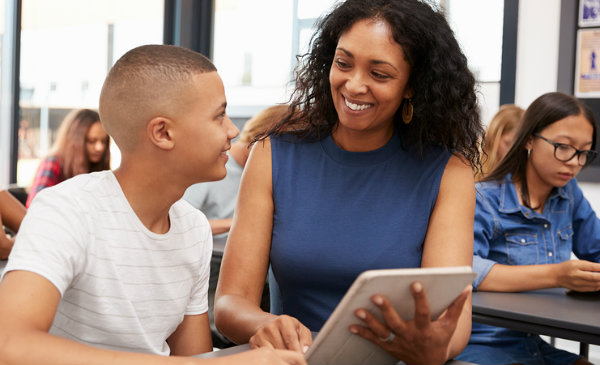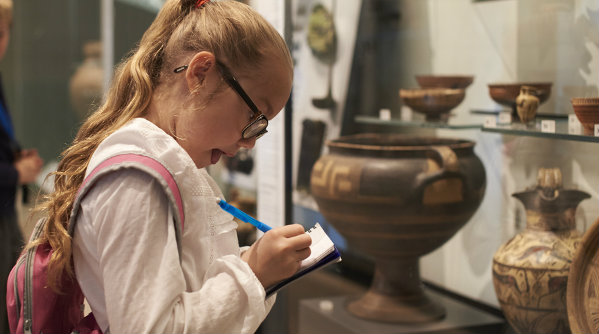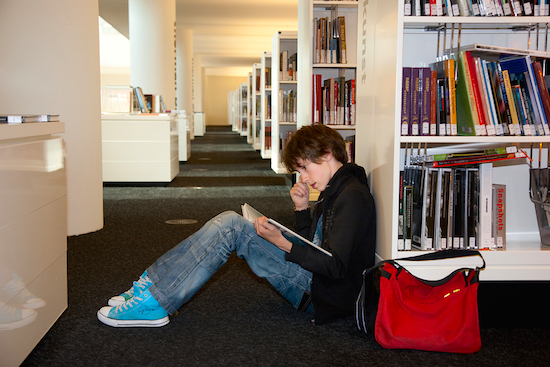The 3 Things Our Middle Schoolers Need Most

Back-to-school season is just a few weeks away in some parts of the USA. This brings to mind busy families hurriedly picking up school supplies and treasuring time together before the first day of class.
But it’s important to also remind ourselves that the back-to-school experience is not the same for every family. Middle school is such a transition time, and heading back can bring on a lot of anxiety and nervousness – feelings that are not always related to academics.
Regardless of their backgrounds, our students today face challenges. When a child steps foot in a classroom, there is so much that they are bringing with them and returning to after the last bell rings – a long bus ride home, a lack of money for school supplies, a parent struggling with addiction.
The majority of educators who participated in the Scholastic Teacher & Principal School Report told us that many of their students face barriers to learning that come from outside the school environment.
Because of the amount of time spent with students, teachers are often the first to identify learning barriers, and are also often the first to address them. I saw this firsthand in my experience as a middle school teacher and counselor.
It took my student Tracey about four weeks to share with me that her dad had lost his job and moved to try to find work. That left her mother pulling a double shift every day to make ends meet. In turn, Tracey was left to get her siblings up, fed, and dressed for school every day. Tracey was under so much pressure, and she was doing her best to keep up with her lessons.

We also provided tutoring during the school day to ensure Tracey stayed caught up. She reached all of her learning goals that year. Fast forward, Tracey is an adult now, with her own family. She stays in touch with me still!
With the start of a new school year approaching, how can we make sure our middle school students like Tracey are getting the support they require for an academically and personally successful school year?
3 things all middle school students need
To start, we should move away from reactive approaches and move towards proactive, whole-school strategies that help all students and provide everyone in the building with support.
1. Positive adult-student relationships
Trust has to be there first and foremost in order for engaged and meaningful learning to occur. At the beginning of the school year, students and their families should know that they can seek out people at school to talk to about the stressors and barriers they are facing.
Teachers should learn as much as they can about their students and families to foster genuine connections built upon trust. This is especially important in the middle grades where students and families may be transitioning from the comforts of an elementary school setting to new and sometimes unfamiliar learning environments.
All of the adults in a school—classroom teachers, guidance counselors, administrators and support staff alike—contribute to a school’s learning culture, which should feel safe and welcoming for all students. Families and community members are also part of this environment. Continuous and free-flowing communication among everyone ensures that the culture of learning is shared and understood by all.
Relationships really matter. Research shows that “children and adolescents who feel supported by important adults in their lives are likely to be more engaged in school and learning” (Croninger & Lee). Even just one positive connection with an adult has the power to change a student’s life, so whether it’s a teacher, or a mentor in the broader community, learning is most effective when everyone is working together towards mutual goals.
As educators, the more we know about our students and their families, the more we understand, and the smarter we can work to map resources and secure support from community partners.
2. Community connections
Social connections bring people together, and it’s important from a young age to remind students that they are part of something larger than themselves. Throughout the year the community can be invited in to enhance learning moments.
For instance, family and community engagement events centered on literacy present opportunities for community members to visit, read aloud to students, and share insights about their careers, hobbies, or areas of expertise—all important pieces in the patchwork of our communities.
In addition, field trips engage students directly in the world surrounding them, as they learn about places and people they may never have known about otherwise. These experiences help create lasting connections that extend beyond the school year.
3. Opportunities to explore interests by reading
The value of literacy must be viewed beyond the skill of reading. Literacy infuses essential skills including social emotional learning and critical thinking, preparing kids to be independent thinkers and active collaborators who can adapt to succeed in tomorrow’s careers. Creating time for – and encouraging active participation in – independent reading and book choice in school and at home can amplify this in important ways.
The 7th edition of Scholastic’s Kids & Family Reading Report shows that kids turn to books to connect to the world at large. About three-quarters of kids agreed that reading fiction and nonfiction is a way to help them understand the world and reading about current events makes it easier to talk about or understand them.
Moreover, kids showed the inherent social emotional value of books when a quarter said they want books that help them imagine and understand other people’s lives, books that make them think and feel, and books that inspire them to do something good.
These elements of the reading experience are key to fostering a genuine interest in continued learning – a valuable trait for any career path. Students need encouragement to explore while developing the mindset, knowledge, and skills required for their futures.
Instruction, yes, but so much more
What middle school students need most goes beyond quality instruction, which is also highly important. They need support from the educators and community members in their lives, and opportunities to discover their interests by reading, because it is this type of relationship-building and critical thinking that they will carry with them throughout life.
References
►Centers for Disease Control and Prevention. School Connectedness: Strategies for Increasing Protective Factors Among Youth. Atlanta, GA: U.S. Department of Health and Human Services, 2009.
►Croninger R.G. & Lee V.E. Social capital and dropping out of high school: benefits to at-risk students of teachers’ support and guidance. Teachers College Record 2001;103(4):548–581.
►Scholastic Kids & Family Reading Report™: 7th Edition. (2019).
►Scholastic Teacher & Principal School Report: Equity in Education. (2016).
Dr. Rhonda Neal Waltman has more than 30 years of experience, having served as a teacher, counselor, principal and assistant superintendent. As an elementary school principal in Mobile, AL, Rhonda led a five-year turnaround resulting in National Distinguished Blue Ribbon School status. As former Assistant Superintendent of Student Support Services, she led the development of a nationally recognized program for providing learning support services to displaced students following Hurricane Katrina. Today Rhonda is National Director, Learning Supports, Scholastic Education.



































Fantastic column! I absolutely love #s 1 and 3. While #2 is also important, I would substitute, for many socio-economically disadvantaged kids, direct instruction on the advantages of education, structured in age-appropriate ways. This is a major disconnect for many of our students, who come from families that don’t, themselves, understand the myriad ways that more education leads to greater opportunity in (and, in truth, greater enjoyment of) life.